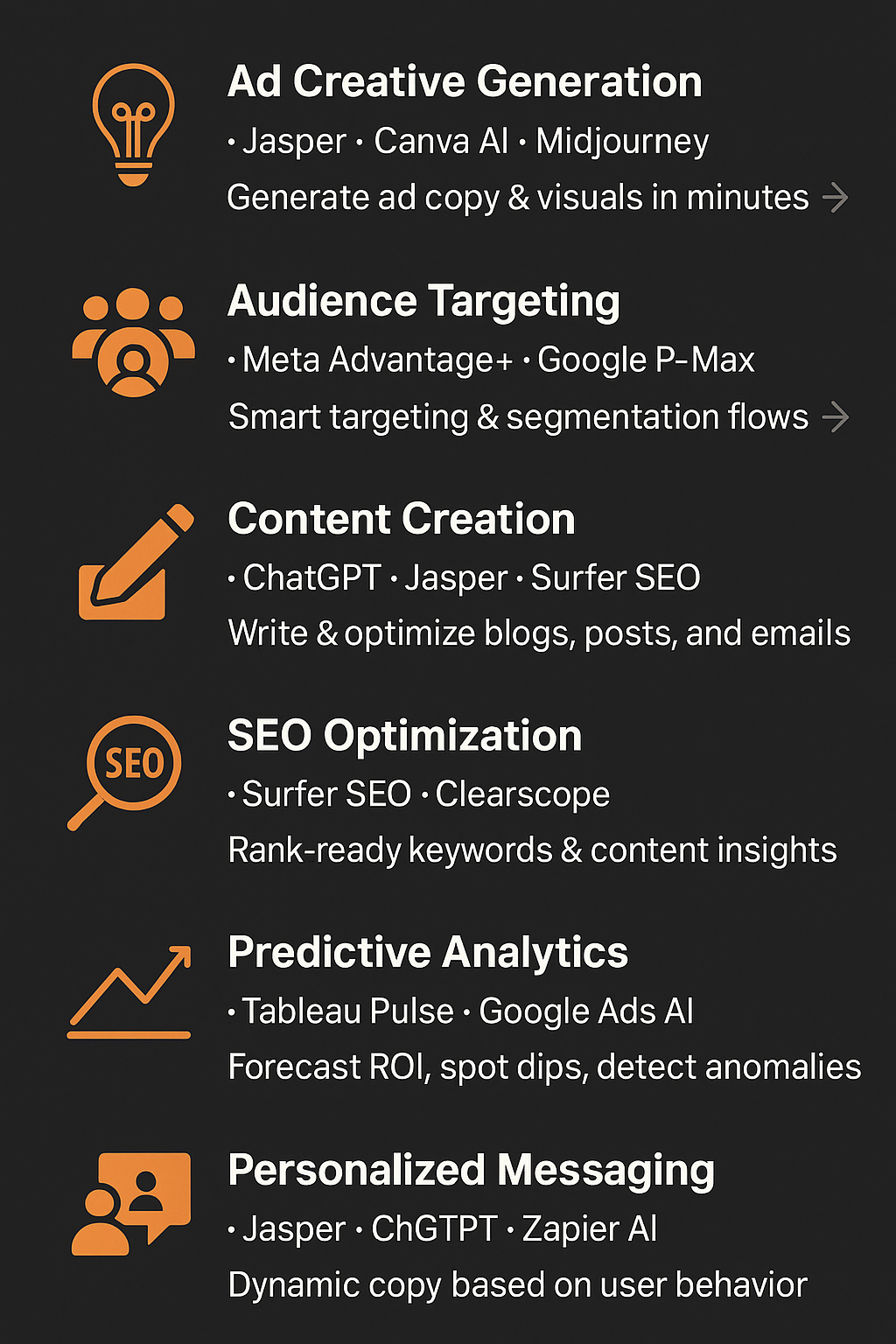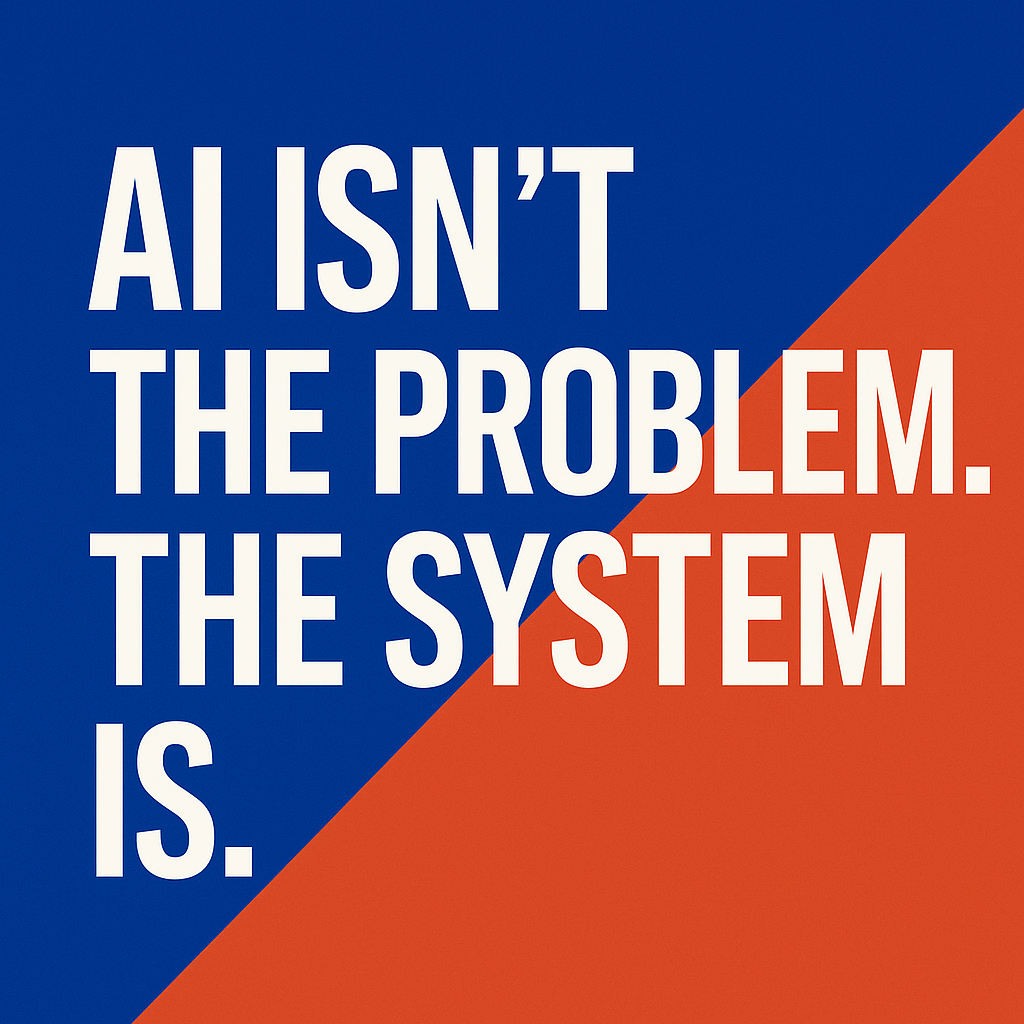Marketing in 2025 is not what it used to be just five years ago. From real-time campaign optimization to hyper-personalized content experiences, the rules have changed. The one force powering this transformation? Artificial Intelligence.
With over 80% of marketers now using at least one AI-powered solution in their daily work, according to a 2025 MarTech Trends report, AI has gone from novelty to necessity. But beyond the buzz, which tools are actually reshaping the marketing and media landscape?
In this comprehensive guide, we explore 12 essential AI tools that are redefining how media agencies, digital marketers, and brand professionals operate. These tools aren’t just futuristic—they’re actively being used by top marketers to research audiences faster, optimize campaigns more accurately, and scale content at unprecedented speed.
1. ChatGPT/ GPT-4o
- Your AI Brainstorming and Copywriting Engine
What It Does: From ad copy to product descriptions to brainstorming taglines,
GPT-4o provides human-like text generation in seconds.
Use cases:
- Automating campaign idea generation using previous brand data.
- Summarizing customer reviews and survey responses into insights.
- Creating prompt packs for blog outlines and product descriptions.
- Generating variations of meta titles and descriptions for A/B SEO testing.
- Writing pitch emails and outreach templates in multiple tones.
- Quick fixes for content rewrites.
- Generating multiple ad headline variations.
- Summarizing long reports or customer feedback into digestible takeaways.
Quick Start: Use the “Custom GPT” mode with your tone of voice and upload past copy to fine-tune output.
Efficiency Boost: Speeds up content ideation by 70%. Integrates with Slack, Notion, Google Docs.
2. JasperAI
-Full-Stack Campaign Creation
What It Does: Jasper creates cohesive marketing materials across formats—ads, emails,
landing pages—based on a single input prompt.
Use cases:
- Building full marketing campaigns from a single creative brief.
- Automatically repurposing long-form content into short-form snippets.
- Generating brand-specific tone styles for different audience personas.
- Producing multichannel messaging sets (email, ads, landing pages).
- Crafting targeted cold outreach sequences for B2B marketing.
- Product launch campaigns - A/B test content creation (headline +subhead variations).
- Drip email sequences.
Quick Start: Activate Campaign Mode → Input product brief → Generate full copy set.
3. SurferSEO
– Rank-Winning Content Optimization
What It Does: Surfer uses real-time SERP data to guide content creation
with keyword scoring, NLP term suggestions, and internal linking recommendations.
Use Cases:
- Mapping semantic clusters and keyword intent around core topics.
- Real-time content scoring and optimization as you write.
- Detecting under-optimized existing pages using audit features.
- Assisting content managers in creating briefs with internal link paths.
- Finding opportunities for featured snippet optimization.
- Creating blog outlines based on ranking factors.
- Content audits for underperforming pages.
- Updating old articles for freshness and visibility.
How To Use: Input keyword → Build SEO brief → Draft content in Google Docs plugin.
4. Clearscope
– NLP-Focused Content Intelligence
What It Does: Clearscope enhances content by analyzing top-ranking
pages and suggesting related terms to improve semantic depth.
Use Cases:
- Creating editorial briefs based on AI-generated keyword clusters.
- Enhancing topic authority using latent semantic indexing (LSI).
- Optimizing press releases for AI Overviews ranking.
- Identifying new subtopic opportunities via competitive keyword analysis.
- Assisting voice search and AI assistant visibility through NLP tuning.
- Competitive keyword gap analysis.
- Writing for AI snippets and summaries
- Improving informational blog accuracy.
Pro Tip: Always include Clearscope’s top 10 terms and questions in your H2s and FAQs.
5. Canva AI (Magic Media)
– Visual Assets on Demand
What It Does: Canva’s AI features help you generate ad-ready graphics,
social creatives, and presentations using text prompts or templates.
Use Cases:
- Creating product mockups based on written input.
- Designing branded infographics using real-time data integrations.
- Auto-generating image carousels for social media campaigns.
- Using AI headshots for team bio pages or media kits.
- Repurposing blog content into presentation slides in one click.
- Creating display ads or IG story visuals.
- Auto-generating presentation decks.
- Designing thumbnails for video campaigns.
Workflow Efficiency: Cuts design time by 70% for non-designers.
How To Use: Select “Magic Design” → Input prompt or headline → Auto-generate visuals.
6. Midjourney
– Stunning Visuals with Text Prompts
What It Does: Midjourney lets marketers create highly stylized images
using simple natural language prompts.
Use Case:
- Design high-converting ad creatives tailored to target audiences.
- Create branded visuals for blogs, landing pages, and emails.
- Generate product concept art, mockups, and storyboards instantly.
- Build consistent brand styles using AI-driven visual exploration.
- Craft stunning visuals for sales decks, webinars, and social campaigns.
Quick Start: Use Discord bot → Type /imagine → Add style descriptor like “3D neon isometric email inbox.”
Best For: Hero images, visual branding, concept art.
7. RunwayGen-2
– AI Video Creation and Editing
What It Does: Runway turns blog posts or scripts into videos, adds automatic captions
and even removes unwanted objects.
Use Cases:
- Turn blog posts into short-form videos for YouTube Shorts and Reels.
- Auto-generate captions, animations, and effects for polished, professional video ads.
- Create product demo or explainer videos without a production team using text-to-video prompts.
- Repurpose webinar recordings into highlight reels or teaser clips for social media.
- Remove unwanted objects or backgrounds from videos in seconds to clean up marketing footage.
How To Use: Upload script → Choose template → Auto-generate clips and captions.
8. Descript
– Text-Based Video Editing
What It Does: Descript lets you edit audio and video as if you’re editing a Word document.
Use Cases:
- Edit marketing videos and podcasts by editing text, just like a doc — no video skills needed.
- Create short, branded clips from long-form content (webinars, interviews, product demos).
- Use Overdub to fix voiceovers without re-recording entire sections.
- Automatically generate captions and subtitles for social media and accessibility.
- Extract soundbites and quotes from interviews for email, blog, or social use.
How To Use Descript: Upload your video or audio → it auto-transcribes → edit the text like a doc → Descript edits the media for you
→ export your final video with captions, branding, or voiceover fixes.
9. Meta Advantage+
– Smart Ad Optimization
What It Does: Meta’s AI automates budget allocation, audience targeting, and ad placement.
Use Cases:
- Automate ad placement and budget allocation across Facebook, Instagram, and Audience Network.
- Generate personalized ad creatives tailored to user behavior and intent.
- Optimize campaigns with minimal manual input, ideal for broad targeting or conversion goals.
- Run dynamic product ads that adjust content based on catalog and audience signals.
- Identify top-performing ad combinations with built-in creative testing and delivery optimization.
Tip: Upload at least 10 creative variations for best results.
10. Google Performance Max
– Cross-Platform AI Ad Management
What It Does: Runs ads across all Google properties using one unified budget and AI-driven targeting.
Use Cases:
- Run ads across Search, YouTube, Display, Discover, Gmail, and Maps with a single campaign
- Auto-optimize creatives and placements based on performance data
- Promote ecommerce products using automated product feed sync
- Capture more leads with AI-driven targeting and bidding
- Expand into new audiences and regions dynamically using Google’s machine learning
Efficiency: One campaign setup → Auto-distribution across Search, Display, YouTube, Discover, and Gmail.
Setup: Add asset groups, conversion goals, and audience signals for optimal AI learning.
11. Zapier AI
– Marketing Workflow Automation
What It Does: Connects your favorite tools to create automated, logic-driven workflows.
Use Cases:
- Auto-send webinar signups to your CRM and email marketing platform.
- Trigger real-time Slack alerts for new form submissions or leads.
- Enrich lead profiles instantly using ChatGPT summaries.
- Automate follow-up emails based on lead behavior.
- Sync data between tools like Typeform, Notion, HubSpot, and Google Sheets.
12. Tableau Pulse
– Real-Time Predictive Analytics
What It Does: Offers AI-generated alerts and predictive recommendations based on campaign data.
Use Cases:
- Monitor ROI spikes and dips in real-time across campaigns.
- Alert teams instantly when key segments underperform.
- Detect anomalies in ad spend, conversions, or traffic patterns.
- Forecast campaign performance using predictive AI insights.
- Visualize marketing KPIs across channels in a unified dashboard.
How Media Teams Use It: Monitor social spend vs engagement in real-time dashboards.
Tip: Set up anomaly alerts by region, channel, or funnel stage.
How These Tools Align with Core Marketing & Advertising Functions

Strategic Advantages of AI Marketing Tools
🔹1. Speed
Accelerate campaign creation, testing, and optimization
what once took days can now be done in minutes using AI-driven workflows.
🔹 2. Precision
AI-powered tools leverage NLP, predictive scoring, and real-time data
to ensure your content aligns with search engine algorithms and AI assistant standards.
🔹 3. Scalability
Transform a single campaign concept into multi-channel assets,
blogs, ads, emails, and visuals—without duplicating manual effort.
🔹 4. Enhanced Visibility
Structured content, schema markup, and AI-optimized metadata
improve rankings in both search engines and AI-generated responses.
🔹 5. Personalization at Scale
Deliver hyper-targeted messages across user segments based on behavior,
interests, and funnel stage—boosting engagement and conversions.
Key Takeaways & What’s Next
These tools aren’t just for automation—they are for amplification.
They allow marketers and media pros to do more of what matters: strategy, creativity, and connection.
But the tools alone won’t make you great.
Mastery comes from knowing when to use them, how to use them, and why they work. That’s where structured training comes in.
Ready to go deeper?
Become an expert in AI marketing with hands-on training.
👉 Join the AI Marketing Professional Course
Because the future isn’t just AI-powered. It’s marketer-powered—with the right tools in hand.
Written by Peter
Marketing Strategist with 10+ years of experience in digital marketing,
brand development, and AI-powered solutions.



